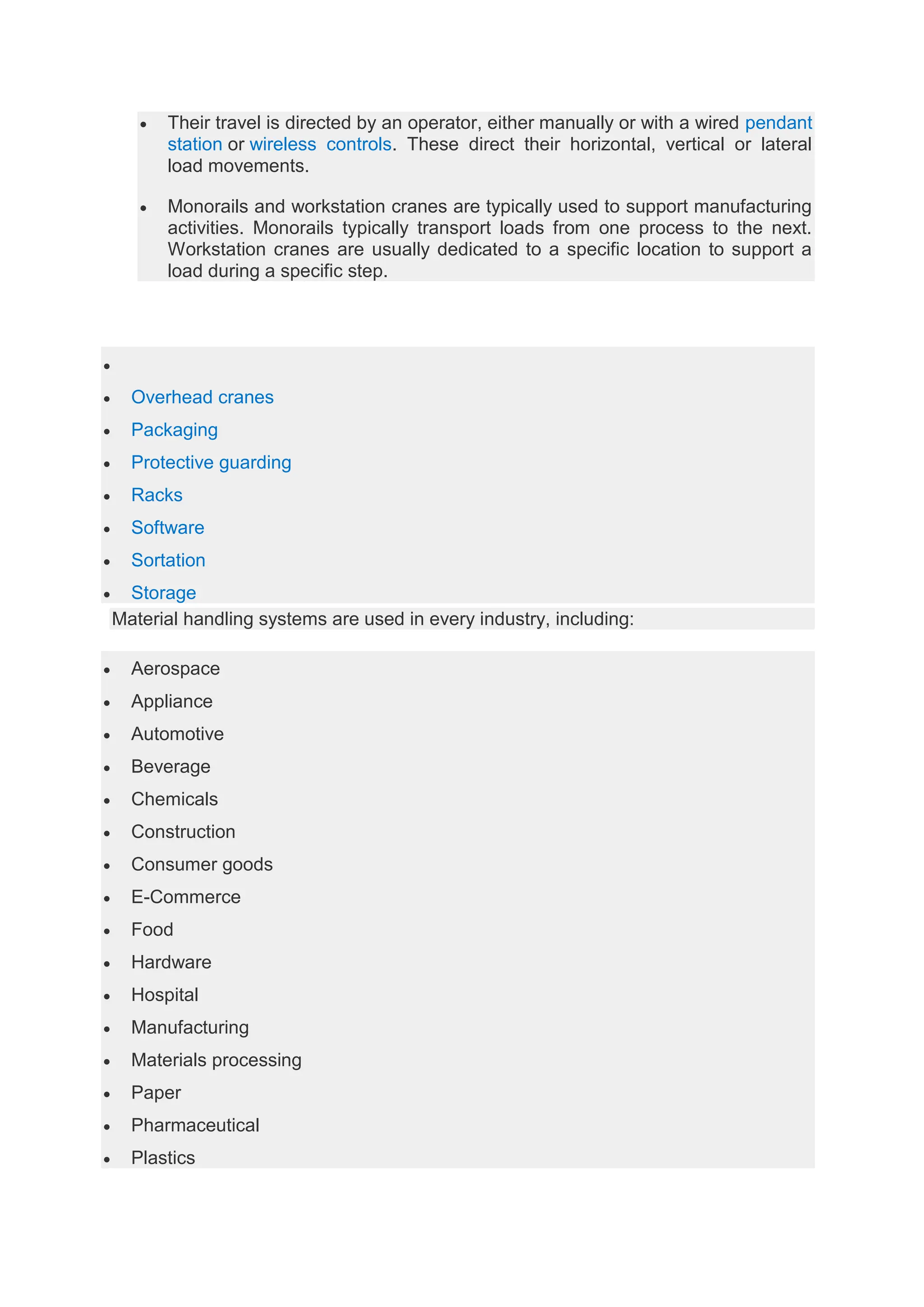Material handling involves the movement, storage, and control of materials throughout the supply chain, from manufacturing to disposal. It incorporates manual, semi-automated, and automated equipment to support logistics and improve processes like forecasting, production planning, and inventory management. A company's material handling system is designed to improve customer service, reduce costs, and streamline operations. There are many types of material handling equipment available, from conveyors and lift trucks to automated storage and retrieval systems and industrial robots, that can aid in the efficient movement of materials. When designing a system, it is important to consider best practices to ensure all elements work as a unified whole.






